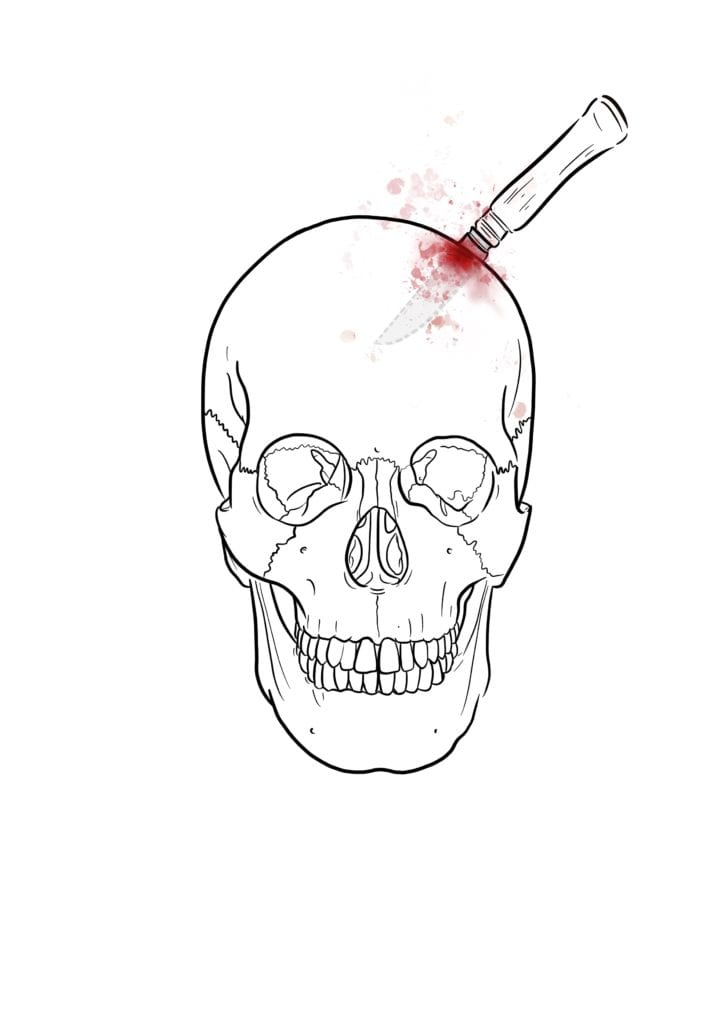Written by Alexandre Dontschev
Brain Penetrating Injuries (BPI) are the most life-threatening form of brain injuries.
Such injuries are characterized by their velocity. High velocity penetration, as you might imagine, is mainly by firearm or shockwave, whereas low-velocity penetration tends to occur commonly using a knife or some other sharp object.
They are a significant cause of mortality in young patient populations.
How common are they in the UK ?
Despite around 6200 gunshot injuries occurring each year in the UK, it is hard to assess BPI’s true incidence as they are typically categorised simply as Traumatic Brain Injury (link to article). That being said, it is not common here. In the US on the other hand, where gun ownership is more common there are around 20,000 cases a year.
Diagnosis
Your doctors will get an urgent computer-assisted tomography scan (CT-scan). This will be useful to assess the type of injury and the scope of the damage done to the brain. Once the scan is done, the BPI can be classified into one of five major categories:
- Perforating ; The projectile enters the brain but does not exit the skull
- Penetrating : The projectile enters and leaves the skull, leaving a visible pathway through the brain
- Ricocheting : The projectile goes in the brain and bounces off the inner part of the skull, one or more times,
- Careening : The projectile enters the skull and travels next to the cortex (surface of the brain) without going into the brain itself
- Tangential : The projectile hits the head but does not go through the skull but may result in scalp cuts, skull fractures or cerebral contusions

Treatment
The initial treatment focuses on controlling the bleeding and keeping the intracranial pressure under control. Then comes the question: Should a neurosurgeon operate on you?
The answer depends on how severe the injury to the brain is. For example, if the CT scan shows extensive damage to the brain, chances are an operation won’t be very effective and will only add to the trauma the patient and their relatives are going through. Some of the main reasons neurosurgeons may intervene are if a weapon is left in place and needs to be pulled out safely, or if there is a blot clot that can be removed or brain swelling that needs decompression. In these cases a patient may undergo a decompressive craniectomy.
This is when you cut out a large portion of the skull in order to let the brain swell out for a period of time and then, when the brain goes back to a normal size, you put the bone back in place and stitch the skull back together.
Bonus Knowledge
The most famous BPI patient is a man called Phineas Gage.
On the 13th of September 1848, Phineas, then a construction foreman, attempted to pack explosives into a rock using an iron bar, resulting in an explosion and the iron rod going through the front part of his brain (specifically, his frontal lobe). He laid unconscious for a few minutes, then woke up and was transported to the nearest hospital.
What is so peculiar about Phineas Gage is that he suffered no speech impairment nor trouble moving his limbs. He only presented with some behavioural changes, acquiring a legend of over time that he was “no longer Gage”, being restless, disrespectful and unreliable following his accident. Whether or not this is entirely true is up for debate. While his behaviour did change, much of his life’s story was exaggerated for dramatic effect, especially to justify the biases of neuroscience at the time. Whatever he was like, his unfortunate injury paved the way for reams of new research into brain function.

Merlin Strangeway
Medical Illustrator
Merlin is an award-winning medical illustrator that works closely with Brainbook to create brainy public engagement illustrations.
Sources
Vakil M.T, Singh A.K, A review of penetrating brain trauma: epidemiology, pathophysiology, imaging assessment, complications and treatment; Emerg Radiol 2016

Leave a Reply